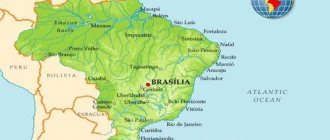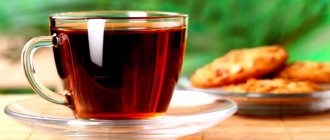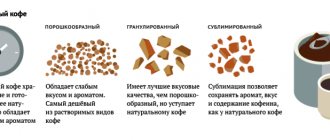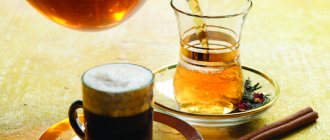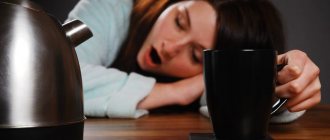In its natural environment, caffeine is a natural alkaloid that is found in coffee beans (1-2%), tea leaves (2%), cola nuts, cocoa fruits and has narcotic properties. In its pure form, it is white, odorless granules, with a bitter taste, highly soluble in water. Therefore, when consumed, the substance quickly penetrates the blood (enters the plasma after 15 minutes), is evenly distributed throughout the tissues and stimulates many organs. The therapeutic effect of caffeine lasts up to two hours. The elimination time depends on the amount of drink consumed, the individual characteristics of the body and ranges from 3 to 10 hours.
Beneficial features
Caffeine tones the nervous, muscular, cardiovascular, endocrine, and digestive systems, mobilizing energy reserves, forcing the body to work more efficiently.
Adding it to scalp care products helps men fight baldness (coffee beans contain components that can strengthen the hair follicle).
Caffeine stimulates the vasomotor centers of the medulla oblongata, as a result of which the tone of the vascular wall and blood pressure increase. By directly influencing the myocardium, it accelerates the work of the heart and makes its contractions more intense. The volume of blood pumped increases, which reduces central venous pressure.
Scientists have proven that drinking up to three cups of coffee a day protects against myocardial infarction.
The stimulating effect of caffeine on the digestive organs is manifested in:
- activation of the vagus nerve;
- increased secretion of gastric juice;
- increasing basal metabolism, breakdown of glycogen with the release of glucose into the blood;
- stimulation of intestinal motility, reducing the frequency of constipation.
Studies conducted by scientists in the USA, Italy and Japan have shown that moderate caffeine consumption reduces the risk of developing cirrhosis and liver cancer by four to five times.
Mental disorders caused by caffeine consumption
This section is transcribed from Stimulant psychosis. (edit | history)
Coffee.
It has been suggested that caffeine
in large doses or with chronic abuse, it can cause psychosis in healthy people or intensify existing psychosis in patients with schizophrenia[15][16][17].
Caffeine, theobromine, theophylline in high doses with chronic use can lead to exhaustion of the nervous system, which can become the basis for subsequent psychosis[18].
The most commonly described occurrence of delirium is caffeine overdose[19]. There is an influx of vivid visual hallucinations, sometimes auditory, and the person loses orientation in the world around him. After caffeine is removed from the body, the memory of the past is usually partially or completely retained. Some patients lose the ability to correctly judge distances, and objects seem to them to be closer than they really are[20]. Somatic disorders accompanying delirium: mydriasis, hyperemia, ataxia, tachycardia, severe thirst, dry skin and mucous membranes, cyanosis of the skin, sometimes increased blood pressure and increased body temperature [21]. Neurological and somatic symptoms are similar to those of atropine poisoning[19].
In more severe cases, deeper clouding of consciousness may be present, accompanied by meaningless motor agitation[20]. In these cases, subsequent complete amnesia[20] and the clinical picture is closer to twilight stupefaction[22].
There is a known case in which an elderly woman who drank 300 grams of coffee daily for two years (about 30 g of pure caffeine) experienced psychosis with disorientation in the environment, episodic visual hallucinations, euphoria, agitation, which ended in death[23].
There are also cases of the development of hallucinosis[24]. Prolonged psychoses with visual and auditory hallucinations with long-term tea abuse are described by V.P. Polyakov and Wark[24][25].
Affective psychoses in long-term caffeine abusers are quite rare, but a case of a condition resembling hypomania has been described[24].
Psychosis with impaired consciousness due to caffeine poisoning usually lasts no more than a few days[26].
Mental and behavioral disorders caused by caffeine consumption are coded in the International Classification of Diseases, 10th Revision (ICD-10) with code 15. With prolonged abuse or overdose, caffeine can cause psychosis, syndromes of impaired consciousness, and delirious states [19].
Tonic effect
The effect of caffeine on the functions of the central nervous system (CNS) is proportional to its individual characteristics: a weak organism requires a small dose, a strong one requires large volumes.
The substance stimulates the activity of the central nervous system:
1. Strengthening and concentrating the processes of excitation of the cerebral cortex. 2. Weakening conditioned inhibition. 3. Improving reflex activity. 4. Stimulating the activity of the spinal cord due to facilitating the flow of impulses along the nerve fibers. 5. Reducing reaction time.
Caffeine can affect nervous activity:
Chemical structure and properties
The chemical name of caffeine is 1,3,7-trimethylxanthine. In an alkaline environment (at >9), it turns into caffeidine C7H12N4O. In structure and pharmacological properties, caffeine is close to theobromine and theophylline; all three alkaloids belong to the methylxanthines group. Caffeine acts better on the central nervous system, and theophylline and theobromine act as cardiac stimulants and mild diuretics.
Caffeine, like other purine alkaloids, gives a positive murexide reaction; when heated with Nessler's reagent, caffeine forms a red-brown precipitate, in contrast to theobromine, which gives a light brown color under such conditions.
Antioxidant action
Free radicals are substances formed as a result of unfavorable environmental factors affecting humans (ultraviolet radiation, high temperatures, radiation), which are characterized by strong chemical activity, enter into unwanted interactions, and cause damage or cell death. The ability of radicals to act on DNA (genetic material) leads to its breakdown and the development of tumors.
Caffeine has powerful antiradical properties - it removes hydroxyl compounds, modulates the synthesis of nitric oxide in cells, while reducing the damaging effects of radicals. Moreover, the caffeine-free drink contains the same amount of antioxidants.
Drinking antioxidant-rich coffee daily reduces the risk of developing:
What determines the caffeine content in coffee?
Type of coffee.
Robusta coffee, which is used in instant coffees, contains twice as much caffeine as Arabica coffee, the most common type of coffee bean on the world market.
Thus, a cup of Robusta espresso with a volume of about 170 g contains up to 200 mg of caffeine. A similar cup of Arabica contains about 110 mg. Roasting.
Many people believe that dark roast coffee is stronger because it has a more pronounced taste and aroma.
However, heavily roasted beans contain less caffeine because prolonged processing at high temperatures breaks down the caffeine molecules. Grinding
Different methods of preparing coffee require different degrees of grinding of the coffee beans.
For example, to make Turkish coffee you need to grind the coffee almost into dust, but for a drip coffee maker or press the coffee is ground quite coarsely. Please note that the finer the coffee grind, the more caffeine will be in the finished product, since the substances contained in small particles are more easily washed out with water. Cooking time.
The longer the coffee is brewed, the higher the caffeine level it will contain. For example, coffee from a press brewed over a long period of time contains more caffeine than coffee brewed instantly using ristretto steam.
Application for weight loss
Consuming caffeine wisely helps you lose weight. For the best effect, it is recommended to combine drinking coffee or an energy drink with fitness classes.
Weight loss occurs due to:
Safety and side effects
In general, caffeine is safe for the body.
However, be aware that it is addictive and some people may be sensitive to it. (, )
Side effects of caffeine include anxiety, restlessness, tremors, irregular heartbeat, and sleep problems. ()
Excessive consumption of caffeine-containing foods and drinks can lead to headaches, migraines and increased blood pressure. (, )
Additionally, caffeine can easily cross the placenta, increasing the risk of miscarriage or low birth weight. For this reason, pregnant women should take special care. (, , )
It should also be noted that caffeine may interact with some medications.
Patients taking the muscle relaxant Tizanidine or the antidepressant Fluvoxamine should avoid caffeine as these drugs enhance its effects. ()
Conclusion:
In some cases, caffeine can have negative effects on the body, causing anxiety attacks, restlessness, and trouble sleeping.
Harm to the body
The adverse effect of caffeine on the human body occurs through the abuse of energy drinks and medications containing this stimulant.
The negative effect occurs more often in children, elderly people with cardiovascular diseases and people with an extremely labile nervous system.
Recent studies have revealed a connection between the consumption of high doses of caffeine and stimulation of apoptosis (death) of myocardial cells.
Women who consume caffeine to excess (more than five cups) are at increased risk of developing osteoporosis (risk of fractures). This applies to older ladies and thin girls whose daily diet contains less than 800 mg of calcium.
Nervous system
In large doses, caffeine provokes the following adverse effects:
With abrupt withdrawal, nervous processes are inhibited, general weakness, muscle tension, and depression appear.
The cardiovascular system
In large doses, caffeine increases blood pressure in patients with hypertension (without changing it in people with normal blood pressure).
It also happens:
Digestive system and liver
The greatest harm comes from drinking energy drinks on an empty stomach. Sometimes this is accompanied by nausea, frequent bowel movements (diarrhea), abdominal pain and aggravates gastritis or peptic ulcers.
Caffeine constricts the blood vessels that supply the abdominal organs.
You can neutralize the irritating effect of this substance on the walls of the stomach by adding milk, cream, or drinking a drink after eating.
Plant sources of caffeine
Below are the most commonly used plant sources of caffeine, along with the natural concentration of caffeine found in the plant (on a dry matter basis). Plant sources are listed in descending order of natural caffeine dose.
Tea extract
Other names: Camellia sinensis, green tea, green tea extract, black tea, Indian tea, cha, oolong tea
Plant part used: leaves or shoots
Natural dose of caffeine: 4,8-9,3%
What's important to know: Since the industrial use of ephedrine was banned, the use of tea extract has increased exponentially. Unfortunately, if the manufacturing company does not indicate on the label the caffeine content of the tea ingredient in the final product, it is often quite difficult to estimate this value.
However, the high caffeine content of tea extract does not necessarily mean that the supplement is more potent. Caffeine is only part of what makes tea extract so effective.
The good news is that the number and range of studies on the comparative effectiveness of tea and pure caffeine, as well as different types of tea, far exceeds the amount of research on most other natural sources of caffeine cited in this article. For example, compared to black tea, green tea has a greater effect on energy metabolism.
Concentrations of the active ingredient also vary significantly depending on the type of tea and extraction method used. The highest concentration of caffeine is observed in black tea, then in oolong, then in green tea, but the highest content of epigallocatechin gallate and the total amount of catechins is observed in green tea, then in oolong, then in black tea. In addition to being powerful antioxidants, catechins also have a positive effect on fat metabolism, dilation of blood vessels and cholesterol levels.
Guarana
Other names: Paulina kupana
Part of plant used: seeds or fruits
Natural dose of caffeine: 7,6 %
What's important to know: Guarana is generally quite soluble in water and is often used as a flavoring component because it imparts a fruity aroma and tangerine flavor. Combined with its high caffeine content, this makes it a popular ingredient in energy drinks.
Although there are clearly some flaws and errors in the methodology and design of several studies comparing guarana to pure caffeine, the use of guarana does appear to provide cognitive benefits, energizing, and mood enhancement, with effects independent of its caffeine content.
It has also been shown that, as with pure caffeine and other caffeine-containing plants, the reported effects of guarana are enhanced when consumed in the absence of carbohydrates and in a low glycemic state. The effective dosage is in the range of 75-300 mg when consuming guarana seed extract with 12% caffeine content. However, at the same time, a certain percentage of caffeine has a significant effect depending on which part of the plant - leaves or seeds - guarana is obtained during the extraction process.
Coffee extract
Other names: Arabica, green coffee extract, Purecaf (liquid caffeine)
Part of plant used: grains or whole fruits
Natural dose of caffeine: 3,2 %
What's important to know: Depending on the main purpose of the final product - stimulant, fat burner or antioxidant and anti-inflammatory properties - the caffeine content of coffee extract can vary from 2% to a whopping 98% concentration.
On the other hand, green coffee bean extract supplements are often high in chlorogenic acids (which have a number of health benefits) but lower in caffeine.
Caffeine and sports
When consuming caffeine no more than 16 mg/kg, muscle activity increases, but larger doses reduce it.
Small amounts of caffeine improve the performance of competitive athletes:
This is explained by the substance’s ability to break down glycogen and fats into glucose (the main source of energy for muscles), promote the production of adrenaline, and accelerate the utilization of oxygen by tissues, stimulating metabolism.
